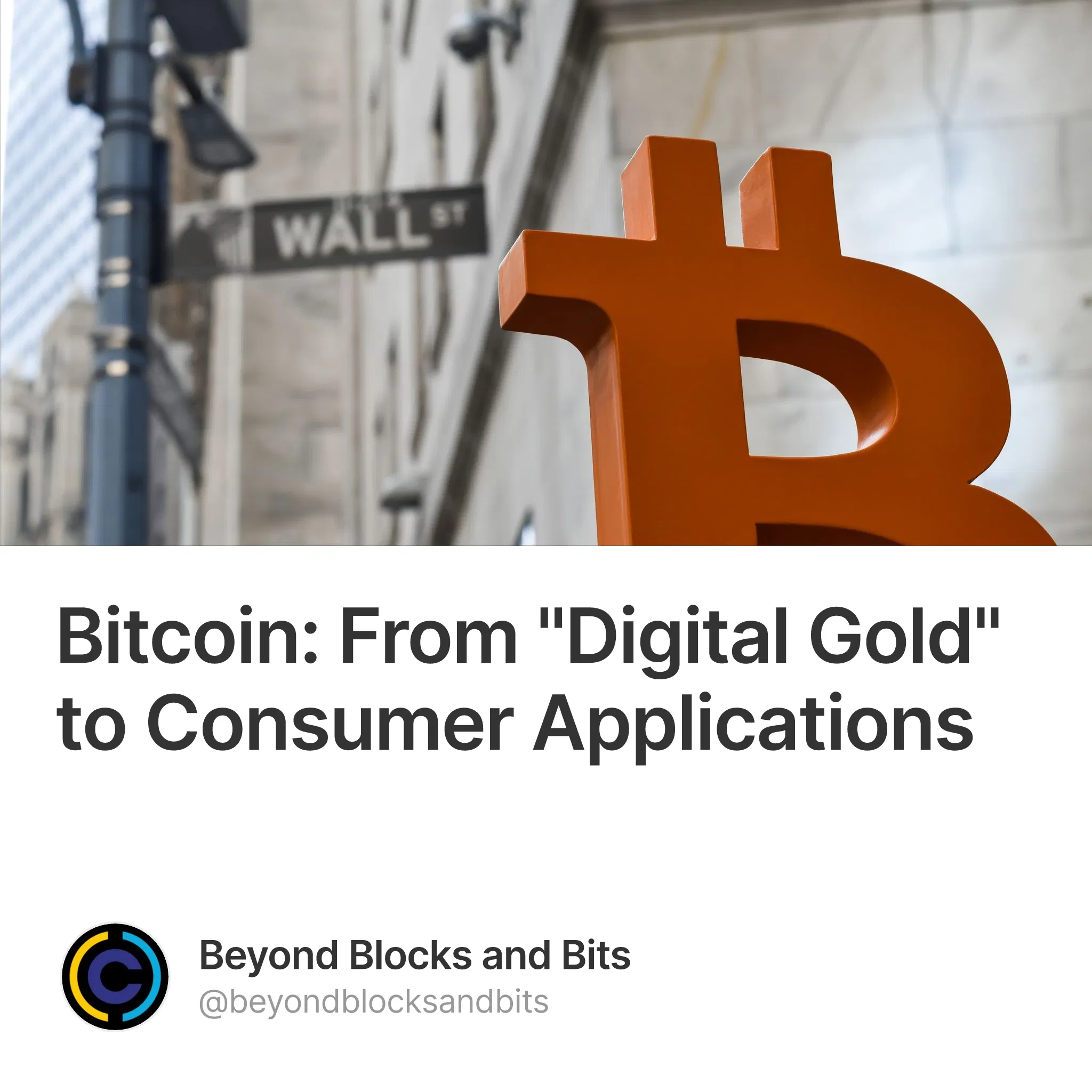From the streets of El Salvador to the boardrooms of Wall Street, shifting market dynamics have propelled Bitcoin from the fringes of the internet to the center of global financial discourse. The return of Tether (USDt) on Bitcoin signals its evolution from the “digital gold” and “store-of-value” narrative to a payment network powering the tokenization of financial assets. Bitcoin holds a dominant position in the digital asset sector, reflected by a 60% dominance and market capitalization of $1.96 trillion, ranking as the seventh largest asset globally, surpassing publicly traded companies and commodities such as Silver, Saudi Aramco, and Meta Platforms.
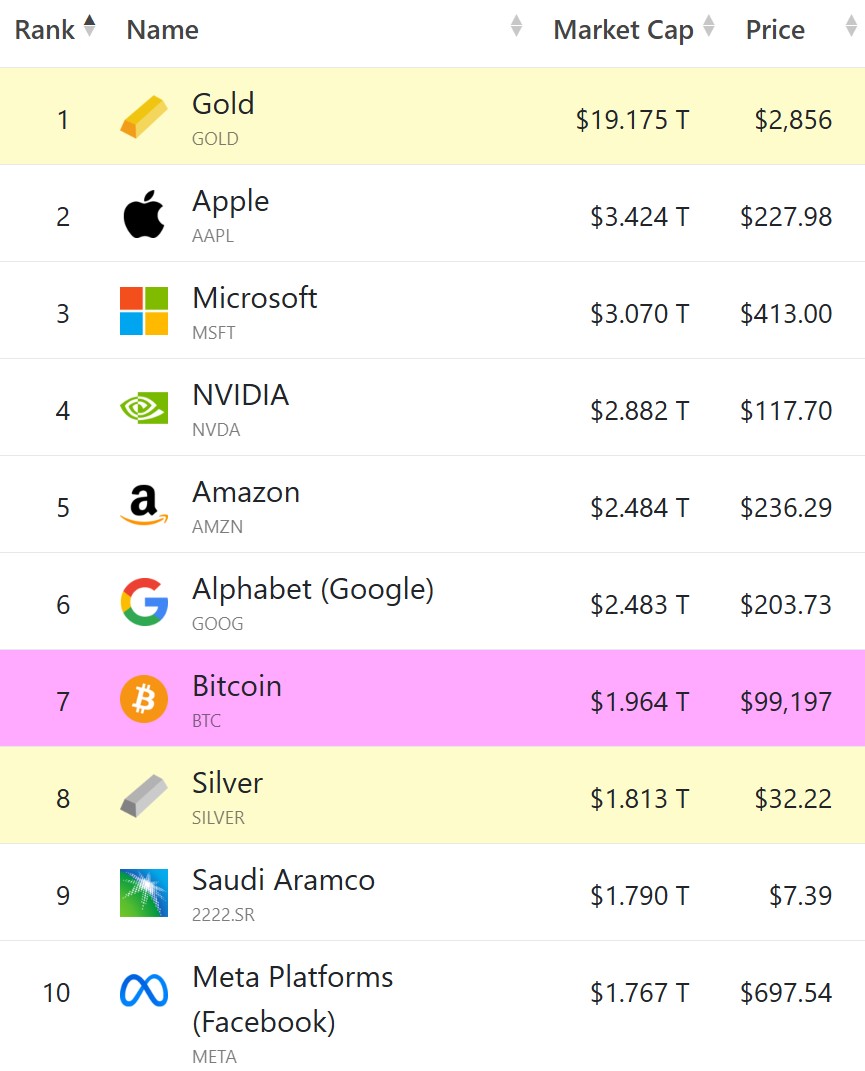
Private and publicly traded companies collectively hold around 4.78% of bitcoin’s total supply of 21 million, with MicroStrategy, Block.One, and Tether Holdings Limited serving as the top three largest holders. Since the U.S. Securities and Exchange Commission (SEC) regulatory approval of U.S. exchange-traded funds (ETFs) to track Bitcoin in January 2024, ETFs have collectively amassed 6.21% of bitcoin’s total supply of 21 million. Governments in eleven countries including the United States, China, U.K., and El Salvador collectively hold 513,188 bitcoin worth $53.71 billion, accounting for 2.45% of the total supply of 21 million. In addition to lawmakers in several countries calling for a Bitcoin National Strategic Reserve, an executive order in the United States on January 23, 2025 called for establishing a Working Group to evaluate the creation and maintenance of a “national digital asset stockpile”. A digital asset arms race could be commencing as countries realize the geopolitical and national strategic importance of Bitcoin, a permissionless network for exchanging valuable bits of information across the internet that cannot be censored or prohibited by adversarial nations.
Bitcoin is a ‘Money’ protocol for the internet and +40 year culmination of research and development. Initially designed as “electronic cash”, the primary use case for Bitcoin has evolved to a “store-of-value”, due to the functional limitations of the network. These constraints have catalyzed the development of Bitcoin Layer-2 (L2) solutions which circumvent the technical limitations of Bitcoin by increasing scalability and offering a wide range of applications comparable to Ethereum and Solana. Around 62% of the circulating supply of bitcoin has not moved in at least one year, and is worth around $1.25 trillion. Bitcoin L2s have the potential to unlock this +$1.25 trillion worth of dormant capital in the Bitcoin ecosystem, while expanding utility from the “store-of-value” narrative to a versatile network offering a wide range of applications.
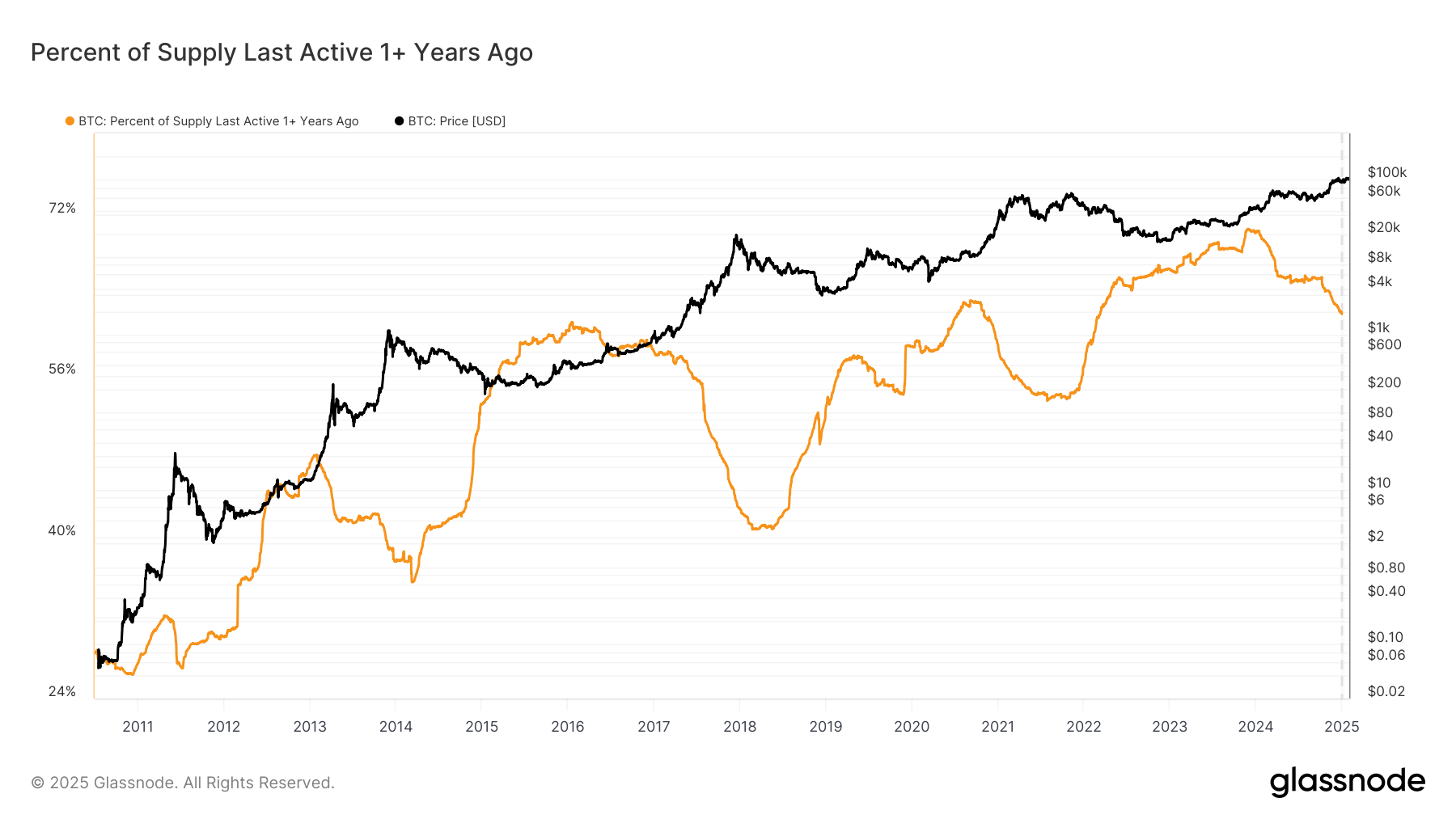
Bitcoin has evolved significantly since Tether (USDt) launched on one of the first Bitcoin L2s, Omni Layer, back in 2014. With a prioritization of decentralization and security, software upgrades have been gradual and steady, including Bitcoin’s Segregated Witness (SegWit) in 2017, which expanded the amount of data stored in a block to 4MB, and Taproot in 2021 which paved the way for the “Bitcoin Renaissance” of 2023. The launch of Ordinals, which enables the inscription of data on individual satoshis, led to the rise of "Bitcoin NFTs", and revived interest in building applications on Bitcoin, while leading to the creation of the Runes protocol.
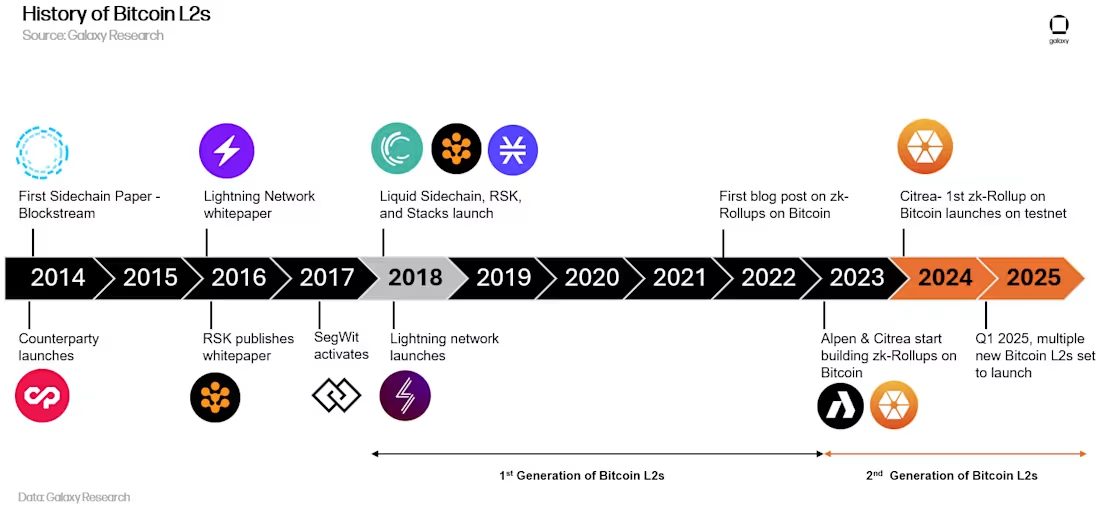
Runes is a layer on the Bitcoin network permitting the creation of fungible tokens and paves the way for tokens powering Decentralized Autonomous Organizations (DAOs), stablecoins, and the tokenization of real-world assets on Bitcoin. Runes is compatible with the Lightning Network, a scaling solution designed for cheap and instantaneous micropayments on Bitcoin while currently holding around $518.74 million in Total Value Locked (TVL). Last month, Tether announced the integration of USDt, the largest stablecoin by market capitalization, on Bitcoin and the Lightning Network, via the Taproot Assets protocol. This integration ushers in a new era of tokenized financial assets on Bitcoin.
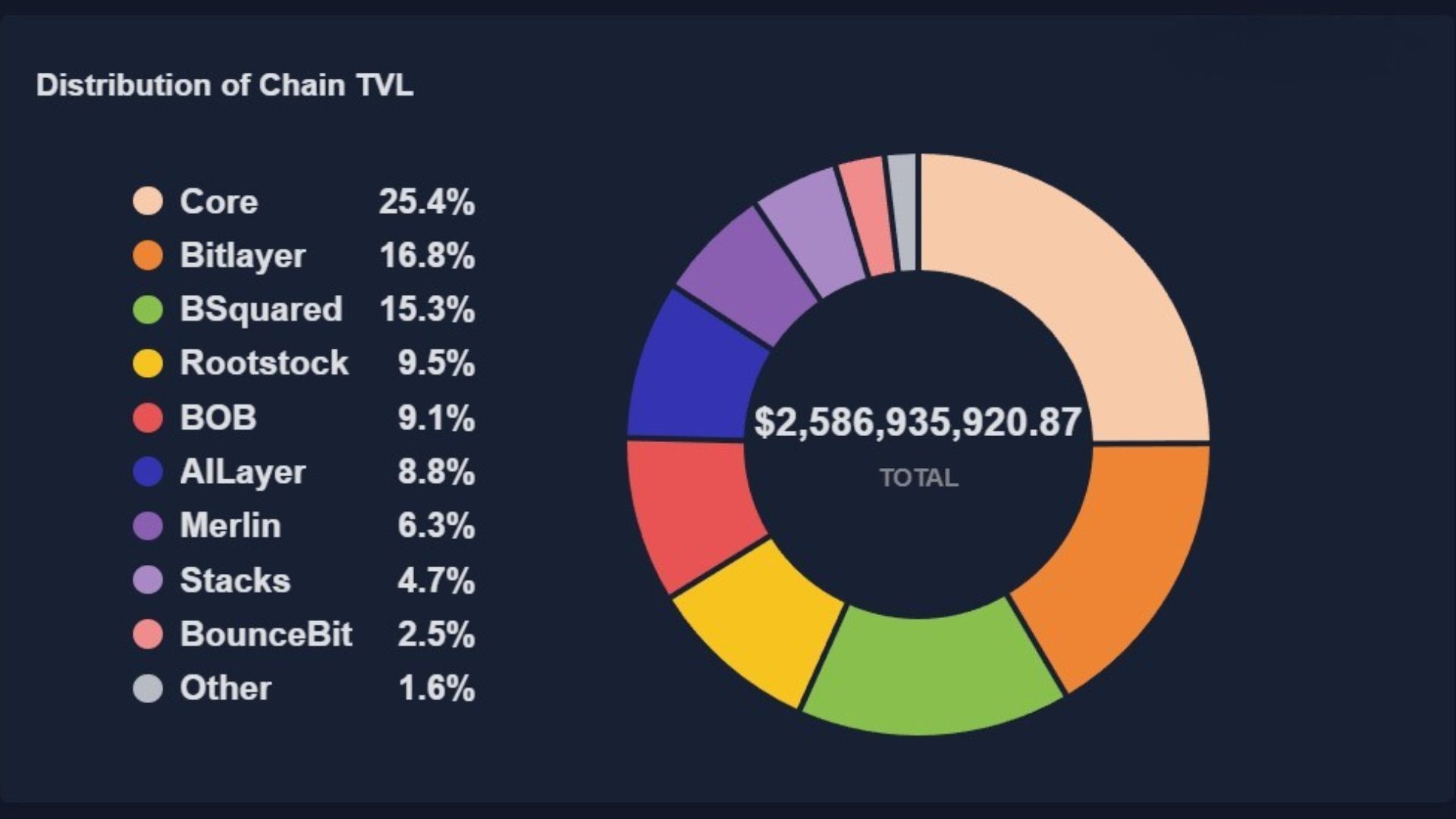
Whereas the Lightning Network optimizes payments, Bitcoin L2s focused on applications (e.g., DeFi, NFTs) collectively hold +$2.5 billion. The top four chains by TVL include Core, Bitlayer, BSquared, and Rootstock. Franklin Templeton led the Series A funding round for Bitlayer, marking a milestone for being the first Bitcoin L2 to receive investment from an ETF-licensed institution. Galaxy Research speculates that “out of the 75 Bitcoin L2s today, only 3-5 players will likely end up eating the lion’s share of the market”. As these technologies continue to evolve, they hold the potential to transform Bitcoin from a “store-of-value” to a versatile network offering consumer applications and financial products. Time will tell whether Bitcoin goes the route of AOL or continues its evolutionary journey as a borderless and decentralized layer of the new internet.
Disclaimer: This material is for informational purposes only and not intended to provide financial, investment, legal, or tax advice. Information is strictly educational and not an endorsement or solicitation to buy or sell any assets or to participate in any investment or trading strategy. No representation or warranty is made, express or implied, as to the accuracy and completeness of the information. Links to third-party websites in the material do not imply endorsement. Please consult with your own accountant, attorney, investment or other certified professional advisor in relation to any investment decision.
